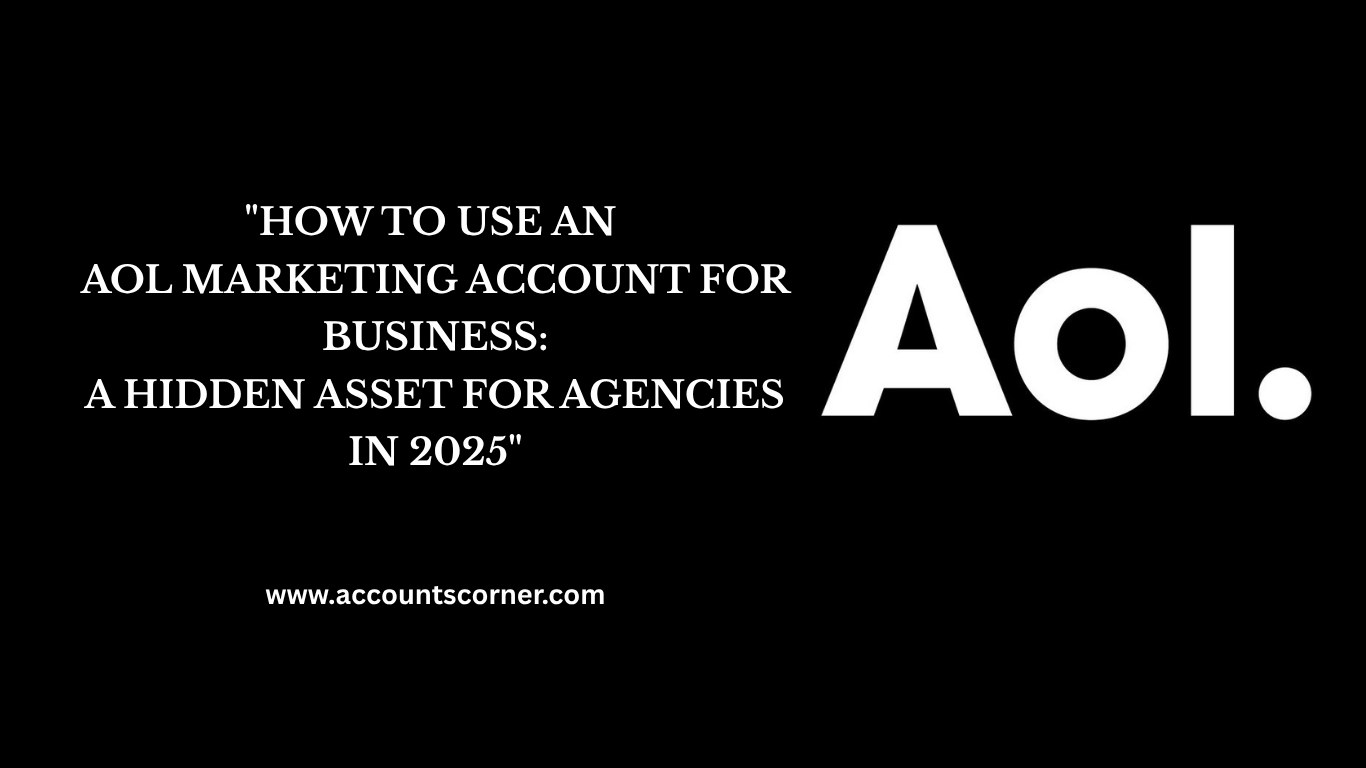Products
-
 Flicker New Accounts
Rated 5.00 out of 5$0.50
Flicker New Accounts
Rated 5.00 out of 5$0.50 -
 Discord New accounts With Gmail
Rated 5.00 out of 5$1.00
Discord New accounts With Gmail
Rated 5.00 out of 5$1.00 -
 Reddit New Accounts With Gmail
Rated 5.00 out of 5$1.00
Reddit New Accounts With Gmail
Rated 5.00 out of 5$1.00 -
 Quora New accounts With Gmail
Rated 5.00 out of 5$1.00
Quora New accounts With Gmail
Rated 5.00 out of 5$1.00 -
 Buy AOL AGED Accounts
Rated 5.00 out of 5$1.00
Buy AOL AGED Accounts
Rated 5.00 out of 5$1.00 -
 Buy Outlook New Accounts
Rated 5.00 out of 5$1.00
Buy Outlook New Accounts
Rated 5.00 out of 5$1.00 -
 Buy Hotmail Aged Accounts
Rated 5.00 out of 5$1.00
Buy Hotmail Aged Accounts
Rated 5.00 out of 5$1.00 -
 Youtube Accounts With Channel and Video
Rated 5.00 out of 5$2.00
Youtube Accounts With Channel and Video
Rated 5.00 out of 5$2.00 -
 Youtube Accounts With Channel
Rated 5.00 out of 5$1.00
Youtube Accounts With Channel
Rated 5.00 out of 5$1.00 -
 Buy Twitter Aged Accounts 2010 to 2021
Rated 5.00 out of 5$1.50
Buy Twitter Aged Accounts 2010 to 2021
Rated 5.00 out of 5$1.50
HOW TO USE AN AOL MARKETING ACCOUNT FOR BUSINESS: A HIDDEN ASSET FOR AGENCIES IN 2025
Posted by:
sangeetha

Learn how an AOL marketing account can benefit your agency in 2025. Explore the advantages of using AOL for business use, from improved deliverability to reaching niche audiences. Discover strategies for acquiring reliable AOL accounts for successful marketing campaigns.
In the ever-evolving world of digital communication, few names are as iconic as AOL.
Enter the AOL marketing account a specialized or optimized version of a standard AOL email account used for outreach, engagement, and campaign testing.
While it might not replace modern tools like Gmail or Outlook for day-to-day operations, the AOL marketing account has become a hidden asset for agencies seeking better deliverability, access to legacy users, and alternative channels for reaching overlooked demographics.
In this post, we’ll explore how marketing agencies can leverage AOL for business use, why AOL marketing accounts are still relevant in 2025, and how these under-the-radar tools can unlock surprising value in today’s high-tech ecosystem.
Table of Contents
ToggleWhat is an AOL Marketing Account?
An AOL marketing account is a strategically utilized AOL email account tailored specifically for business or outreach purposes. While it shares the same core infrastructure as a standard AOL email account, what distinguishes it is how it’s used and often how it’s acquired typically through aging, phone verification, and preparation for consistent marketing activity.
A properly set up AOL marketing account often includes:
- Phone Verification (PVA) to boost account legitimacy and reduce spam risk.
- Aged Account History, which improves domain trust and inbox placement.
- Clean IP Usage, meaning it hasn’t been abused for spam or flagged by ISPs.
- Consistent Activity Patterns, mimicking natural usage to maintain trustworthiness.
- Custom Setup for Marketing Tools, such as compatibility with email campaign managers or CRM integration.
These features give the account a professional edge, especially when using AOL for business communications in a world filled with spam filters and sceptical inboxes.

How Marketing Agencies Can Integrate AOL Accounts Strategically
In an era dominated by platforms like Gmail, Outlook, and LinkedIn, it may seem counterintuitive for a marketing agency to rely on an AOL marketing account. But smart agencies understand that leveraging underutilized yet trusted platforms like AOL can give them an edge especially in niche markets and campaigns where competition is fierce and inbox saturation is high.
Let’s explore how agencies can strategically use AOL for business use, boosting results without compromising compliance or quality.
1. Practical Examples of AOL Accounts in Modern Marketing Stacks
While AOL isn’t usually the centrepiece of a marketing strategy, it can be a powerful supporting tool when integrated correctly. Here are some real-world applications:
- Cold Email Outreach to Older or Legacy Clients
If your agency serves industries with older demographics (e.g., healthcare, law, insurance), your audience may still use or recognize AOL addresses. Reaching out from an AOL marketing account could feel more familiar and less like spam compared to newer domains. - Reactivation Campaigns
For brands with dormant email lists, sending a reactivation message from an AOL account can bypass previous blacklists or spam tags associated with their primary domain. - Testing Deliverability
Marketers often test new campaign structures using multiple email providers. An AOL account is ideal for seeing how messages perform in varying inbox environments. - B2B Verification or Contact Requests
Sometimes, using a less common email domain for business inquiries can help you avoid filters that typically block mass marketing domains.
2. Combining AOL with Automation Tools (Legally and Ethically)
Modern marketing depends heavily on automation but automation must be used responsibly, especially when working with older platforms like AOL.
Here’s how to combine the two without violating terms of service or ethical boundaries:
- Use Low-Volume Sending Schedules
Avoid blasting hundreds of emails per hour. Instead, configure your email automation tool to send 5–10 emails per hour from each AOL marketing account. This mimics human behaviour and preserves deliverability. - Use Warm-Up Tools
Before running campaigns, warm up the AOL account with regular, manual emails. You can then scale up gradually using warm-up automation platforms that simulate engagement. - Respect AOL’s Limitations
AOL has its own email sending limits and spam filters. Keep messages simple, avoid heavy graphics, and never use spammy subject lines. - Track Legally with Opt-Out Links
Even if you’re using AOL, your campaigns should still be CAN-SPAM and GDPR compliant. Include unsubscribe options and avoid deceptive headers.
Using AOL for business use responsibly ensures long-term viability and protects your agency’s reputation.
3. A/B Testing AOL vs Gmail or Yahoo
One of the most strategic ways to prove the value of AOL marketing accounts is through A/B testing:
- Split Your Campaign Across Platforms
Run the same email campaign using identical copy from AOL, Gmail, and Yahoo accounts. Track metrics such as open rates, click-through, and bounce rates. - Compare Response Quality
Beyond opens and clicks, see which sender domain gets better engagement or replies. In certain demographics, AOL surprisingly performs better due to lower suspicion. - Test Spam Filter Behaviour
Gmail and Outlook have aggressive spam filters. AOL emails often bypass these in certain inboxes, giving you a better chance of visibility especially for initial outreach.
A/B testing can help your agency determine when and where AOL should be part of the strategy, instead of relying purely on assumptions or trends.
When used strategically, AOL for business use isn’t just a quirky idea it’s a legitimate asset in a well-rounded marketing stack. Whether you’re seeking higher inbox placement, better cold outreach responses, or segmentation options, an AOL marketing account can offer unique advantages that your competitors may be overlooking entirely.

Where to Acquire a Reliable AOL Marketing Account
If your agency is planning to use an AOL marketing account as part of its business strategy, sourcing a trustworthy and high-quality account is crucial. Not all AOL accounts are equal for classified ad posting especially when it comes to using AOL for business use where deliverability, reputation, and compliance matter.
This section provides guidance on where to find reliable accounts, what to look for in a seller, and what to avoid to protect your campaigns and your credibility.
1. Tips on Sourcing Accounts (PVA and Aged AOL Accounts)
When acquiring AOL accounts for marketing, there are two key attributes that make them valuable:
- Phone Verified Accounts (PVA):
These are AOL accounts that have been verified with a phone number. PVAs are seen as more secure and trustworthy by AOL’s system, which helps reduce the risk of suspension or filtering. PVAs are especially important when sending business-related emails or automating outreach. - Aged Accounts:
AOL accounts that have been active for several years carry more weight in terms of deliverability. An older account with a clean usage history is far less likely to be flagged as spam, making it an ideal choice for email marketing or client communication.
When looking to buy an AOL marketing account, ensure it is both phone-verified and aged to get the maximum benefit.
2. What to Look For in a Seller or Account Provider
Finding a reputable seller is just as important as choosing the right account type. Here’s what to look for when selecting a source:
- Transparency and Documentation:
A trustworthy provider should clearly list account specs (e.g., PVA status, creation date, usage history). Look for vendors who offer replacements or refunds if accounts are not as described. - Positive Reviews and Ratings:
Search for user feedback, forum discussions, or third-party reviews. Avoid sellers with poor customer service or suspiciously low prices. - Secure Delivery Methods:
The seller should use encrypted delivery systems and recommend password resets upon transfer. This ensures account safety and limits potential risks from prior access. - Legal and Ethical Compliance:
Make sure the provider is not sourcing accounts through illegal means (e.g., hacked accounts, phishing schemes). Using such accounts not only violates platform terms but could expose your agency to legal risk.
Reputable marketplaces and verified vendors specializing in aged or niche-use email accounts are your best bet. Avoid sketchy sellers operating in black hat forums or unverified Telegram groups.
3. Warnings against Using Black hat or Low-Quality Sources
While it may be tempting to opt for the cheapest option available, low-quality or black hat-sourced AOL marketing accounts come with serious downsides:
- High Suspension Risk:
Accounts created in bulk with fake information or scripts are often flagged quickly. If your campaign is linked to one of these accounts, your domain’s reputation may suffer. - Compromised Security:
Many black hat sources recycle accounts, meaning the original creator or seller may still have access. This poses a major security risk, especially when using AOL for business use. - Spam Blacklists:
Poorly sourced AOL accounts may already be on spam blacklists. Using them could hurt your IP’s sender reputation and affect other email campaigns. - Legal Implications:
Purchasing accounts from unauthorized or unethical sources could violate AOL’s terms of service and in some cases, local or international data protection laws.
To avoid these issues, always work with providers who offer legitimate, ethically sourced, and verified AOL marketing accounts especially when using them as part of your professional outreach strategy.
Final Thoughts: Should Agencies Still Consider AOL in 2025?
In 2025, AOL might not be the first platform that comes to mind for marketing but that’s exactly why it can be so effective. The AOL marketing account remains a hidden gem for agencies that know how to use it strategically.
AOL still benefits from its long-standing reputation and familiar branding. Emails from AOL are less likely to be flagged as spam, especially when sent from aged and phone-verified accounts. This makes AOL for business use surprisingly valuable in niche marketing campaigns.
Certain industries and demographics still trust AOL more than newer platforms. If your agency targets older consumers or legacy systems, an AOL marketing account may outperform mainstream tools like Gmail in both engagement and deliverability.
That said, AOL shouldn’t replace your primary email platform. Instead, think of it as a complementary asset ideal for testing, outreach, or reconnecting with hard-to-reach audiences.
In short, AOL for business use isn’t outdated it’s underutilized. Agencies that recognize its value can gain a quiet advantage in today’s noisy digital market.
















